Constance
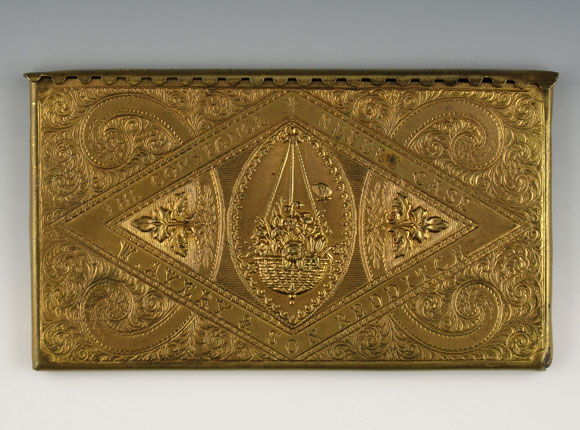
Needle Case
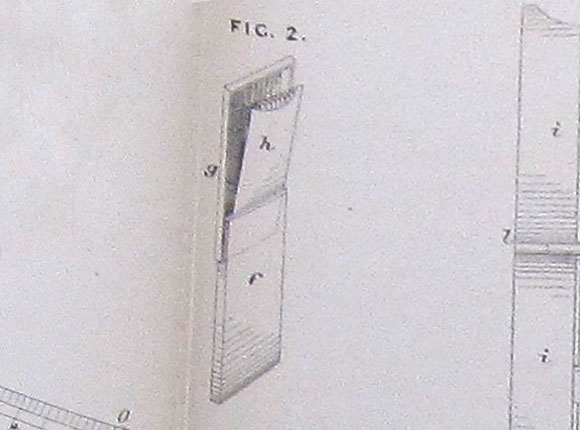
Patent (patent #1473 is incorrectly stamped on the actual needle case)
Design Details
Needle Case Type: |
Flat-Names |
Patent/Registered to: |
William Avery - Redditch Manufacturer |
Patent/Design Representation #: |
Mechanical Patent #: Quadruple version of 1322 (Fig. 2) |
Patent/Design Registration Date: |
May 16, 1871 |
Location of Patent/Design Registration: |
British Library - Business and Intellectual Property Centre - London
|
Reference #: |
1871-1322 |
Dimensions: |
4.9 x 8.3 |
Material: |
Brass |
Name Variations: |
W. Avery & Son - Redditch |
Other Variations: |
None |
Additional Photographs

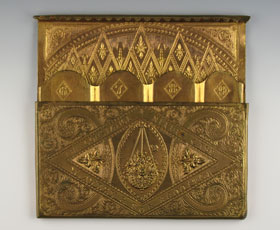
Back and interior open
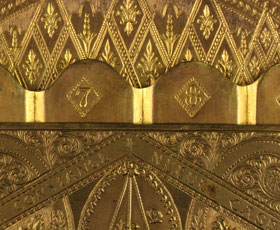
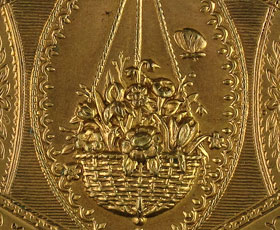
Interior and front detail
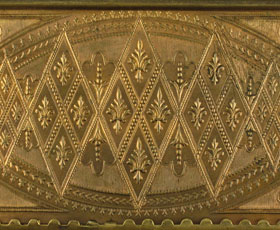
Back detail
Facts
It is not known for whom the Constance needle case was named. The name Constance derives from the Latin Constantia meaning firm of purpose
or constancy. Variations of the name are used in many languages. It was introduced to England with the Norman invasions because William
the Conqueror had a daughter Constance.
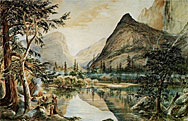
Indian Life at Mirror Lake painted by Constance Gordon-Cumming in 1878
History
There are several notable ladies named Constance that can identified during the latter part of the 19th century and each lived up to the name’s
meaning.
1) Constance Gordon-Cumming, born in 1837, was the 12th daughter of a wealthy, titled family from Scotland. She was a gifted self- taught
landscape painter who after spending a year in India when she was 30 developed a passion for travel. Among the places she travelled are
Australia, New Zealand, America, Hawaii, China, Japan and Pacific Islands including Fiji, Samoa and Tahiti. She documented her travels
through writing and painting, producing over a thousand watercolours and many published travelogues. As a strong and independent woman for
that era, she often travelled alone, drawing considerable criticism from male writers. She died in 1924 and was buried in Scotland.
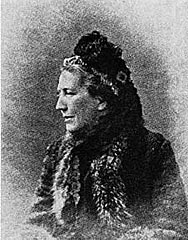
Constance Cumming
2) Constance Naden was born in Birmingham in 1858. Her mother died shortly after her birth so she was raised by her maternal grandparents
though her father, an architect, also lived with the family for some years. She was very well educated for her time with an interest in
philosophy and the sciences. Among her achievements were publications including two volumes of poetry, scientific essays and journal
articles. She was awarded prizes for essays on subjects as diverse as geology and logic. After inheriting money from her Grandmother
she travelled to Turkey, Palestine, India and Egypt and upon returning to England raised funds to enable Indian women to study medicine. She
died in 1889 at the age of 31 from complications following surgery. Two books were published posthumously, one of her essays and the other a
complete collection of her poetry.
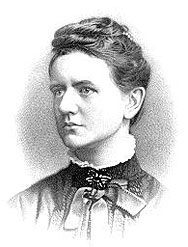
Constance Naden
3) Constance Bulwer-Lytton was born in 1869 in India where her father Robert Bulwer-Lytton 1st Earl Lytton was the Viceroy. Her mother Edith
Villiers later became Lady-in–Waiting to Queen Victoria. She had little interest in aristocratic society and after her father’s death in 1891
spent her time caring for her mother. Her mother refused permission to marry beneath her in 1892 so she never married and withdrew from
society until she was left an inheritance in 1905. She gradually became involved in women’s rights not altogether surprising considering her
paternal great grandmother was Anna Wheeler a famous women’s rights activist and her grandmother Rosina Bulmer Lytton nee Doyle Wheeler an outspoken
writer. By 1909 she was a member of the Women’s Social and Political Union (WSPU) which was the most militant organisation of the suffragette
movement. An active campaigner, she was arrested and jailed following demonstrations but because of her noble birth was treated favourably
which infuriated her. In disguise and under an assumed name she was arrested and force fed since prison hunger strikes were used by members to
further their cause. These incidents seriously affected her health and she died in 1923 at the age of 54.
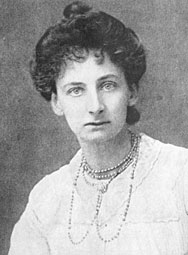
Constance Lytton
Miscellaneous
Women’s rights in England gradually increased throughout the 19th century though it wasn’t until 1870 that they were granted the right to keep
money they earned and 1891 for a legal judgement to rule that a wife could not be made to stay with a husband against her will. Throughout
much of the century many uneducated men erroneously thought it their legal right to sell a haltered wife in the marketplace. The right for
females to vote gathered momentum in 1897 but was won only after a long and hard fought battle. With frustration at the failure of peaceful
Suffrage means such as lobbying and letter writing, more militant were tactics were employed. The Suffragettes lead by Emmeline Pankhurst
adopted much more aggressive means including disruption of political meetings and Parliament, throwing rocks, vandalism of property an even church
burning, to force arrest and imprisonment to use hunger strikes. It wasn’t until 1918 that women over 30 were granted the right to vote.
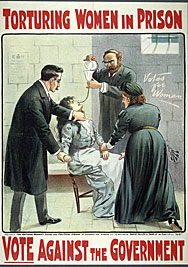
Note: Right side panel text and photos provided by Lynda Herrod.
















